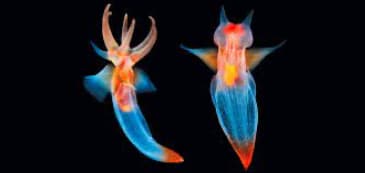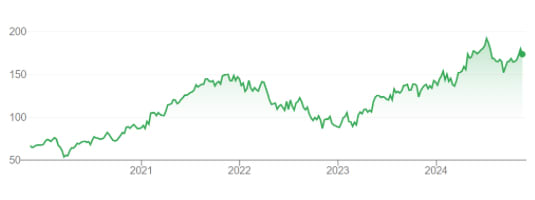The Earth is a fascinating place full of wonders, housing thousands of unique creatures! From snow leopards residing in cold, frosty mountains to camels strolling through the dry, sandy deserts, it beckons you to come and explore what it has in store. But make no mistake! Aside from all of the animals on land, there are even more in its oceans. After all, 71% of the planet is covered in water. So why not dive deeper–no pun intended–at what sorts of fascinating creatures may be beneath the surface?
1) Japanese Spider Crab
Macrocheira kaempferi, or the Japanese spider crab, is the largest crab species in the world, with its legs reaching up to 12 feet from claw to claw and a carapace (main body) measuring up to 12 inches! Unlike traditional spiders that have only eight legs, the Japanese Spider crab has ten legs in total which continue growing throughout its entire life!
This species of invertebrate resides on the seafloors as far as 2,000 feet deep in the Pacific Coast of Japan. Despite having ten long legs, it is very slow-moving. In general, it pretty much hangs out in groups with other Japanese spider crabs, with little to no disruptions from predators. It mainly scavenges for food, feeding on dead fish, algae, and invertebrates. Occasionally, the Japanese spider crab will also pry open mollusks with its claws and even catch small invertebrates like small crabs.
Although it appears to be a very dangerous and terrifying creature based on its size, the Japanese spider crab is considered to be harmless! It rarely comes into contact with humans, it is not aggressive, and–as baffling as it may seem–its claws are not very strong. So if a creepy old sailor comes up to you and tells you how a group of Japanese spider crabs devoured all of his ship mates, do not sweat it!
2) Sea Pig
Like the Japanese Spider Crab, the Sea Pig is also an invertebrate that resides at the bottom of the ocean, living more than 4,200 feet deep. One interesting fact about this amazing creature is that it is actually a species of sea cucumber! It was called the Sea Pig because of its pink body and its love for the muddy seafloor. Scientifically, it is referred to as Scotoplanes.
These animals are relatively small, measuring between 1.5 to 6 inches. It has small, tube-like feet on its underbelly and back that help it move around on the bottom of the ocean. The Sea pig is not a hunting species; it roams around for bits of dead sea plants and animals that have fallen down from the surface.
Scientists have made some exciting recent discoveries, revealing a mysterious relationship between juvenile King crabs and Sea Pigs. Because these young crabs are still too weak to defend themselves, they will latch onto the underside of Sea Pigs in an attempt to hide from potential predators. But how might Sea pigs benefit from this clingy correlation? This is yet to be uncovered.
3) Sea Angel
The Sea angel (Gymnosomata) resides in cold and temperate waters and has been spotted living at depths as far as 5,921 feet! It is a type of sea snail, with a transparent body that helps it hide from predators and “wings” called parapodia. It is also very small, reaching only half an inch in size.
This creature did not get their name for nothing; it is a very beautiful thing to look at because of its graceful movement through the water and its overall appearance. But what if I told you that it isn’t as innocent as you may believe it to be? After all, the Sea angel is a predator, snatching up its prey with finger-like tentacles that pop out of its head. Not only that, but it literally sucks the life out of those poor creatures. The horror!
4) Blobfish
The Blobfish, or Psycrolutes marcidus, is one of the most well-known deep sea creatures because of its amusing, squishy appearance. What a lot of people do not know, however, is that the Blobfish does not look completely like the way it is portrayed in memes. In reality, the Blobfish looks like a normal, fully formed fish! Let us dive into the conditions of a Blobfish’s habitat to better understand why it looks the way it does!
It is found in Australia, New Zealand, and Tasmania from 2,000 to 4,000 feet below sea level. Because the pressure is greater at such depths, the Blobfish adapted in such a way that it does not have any bones in its body! Instead, the pressure of its habitat gives it its structural support. Once the Blobfish is brought up to the surface, the pressure decreases and it loses its structure, leaving us with the blob we have all learned to know and love!
5) Flapjack Octopus
Like the sea angel, the Flapjack Octopus is also well-known for its utter cuteness! It is fairly small, measuring up to 20 inches and it has two fins on top of its head that resemble elephant ears, adding to its adorable appearance. This octopus can be found in deep sea habitats worldwide.
The Flapjack octopus belongs to a very specific group of octopuses, known as the cirrate octopods. What makes them different is that they have webbing between their arms and they do not have ink sacs. In addition, they lack the ability to camouflage. Instead, they simply hide right in front of predators without getting caught! This is achieved due to the fact that the reddish color of the octopus is lost at certain depths of the ocean, making the predators unable to see their prey!
Being a predator itself, it probes the seafloor for goodies like worms and other small invertebrates. Using its webbed arms, it stirs the sediment of the seafloor to help it search. Once they have found its prey, it traps it in its arms and moves it into its mouth.
Since all of these animals are so deep underwater, scientists can only know so much about them. Environmental damage like pollution does not make this task any easier. Each day, plastic and other wastes are finding their way into the water, harming hundreds of species worldwide and the probability of losing them grows greater! The more species we lose, the greater the damage to ecosystems, and consequently, our planet. However, there is always something we can do, and the more we understand just how important keeping the Earth clean really is, the more lives we will save!
Works Cited:
“Japanese spider crabs”, Monterey Bay Aquarium (n.d.),
https://www.montereybayaquarium.org/animals/animals-a-to-z/japanese-spider-crab. Accessed 19 Jan 2025.
“Sea Pig”, Monterey Bay Aquarium (n.d.),
https://www.montereybayaquarium.org/animals/animals-a-to-z/sea-pig. Accessed 19 Jan 2025.
“Sea Angel”, Monterey Bay Aquarium (n.d.),
https://www.montereybayaquarium.org/animals/animals-a-to-z/sea-angel. Accessed 19 Jan 2025.
Black, Madeline. “An Ode to the Blobfish”, Ocean Conservatory, 10 Jan 2020,
https://oceanconservancy.org/blog/2020/01/10/an-ode-to-the-blobfish/
“Flapjack Octopus”, Monterey Bay Aquarium (n.d.),
https://www.montereybayaquarium.org/animals/animals-a-to-z/flapjack-octopus. Accessed 19 Jan 2025.











